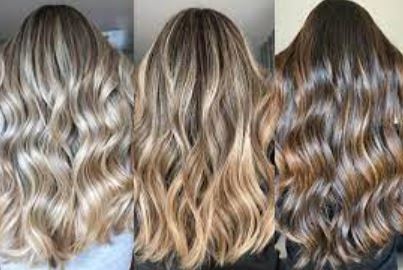Table of Contents
- 1 Gathering Supplies
- 2 Choosing the Right Hair Color
- 3 Prepping Your Hair
- 4 Performing a Strand Test
- 5 Applying the Hair Color
- 6 Waiting and Rinsing
- 7 Post-Color Care
- 8 Troubleshooting Common Issues
- 9 Tips for a Successful Home Hair Coloring
- 10 Maintenance and Touch-Ups
- 11 Safety Precautions
- 12 FAQs About Home Hair Coloring
- 13 Conclusion
Changing your hair color is a fantastic way to express your personal style and refresh your appearance.
While salons offer professional hair coloring services, many individuals are opting for DIY hair coloring to save money and enjoy the convenience of home application.

Gathering Supplies
Before you dive into coloring your hair, it’s essential to gather all the necessary supplies.
You’ll need a hair coloring kit, gloves, an old shirt, clips, a mixing bowl, an applicator brush, and petroleum jelly to protect your skin from staining.
Choosing the Right Hair Color
Selecting the right hair color is crucial for achieving the desired result.
Consider your skin tone, eye color, and current hair shade when choosing a color. If you’re unsure, consult the shade chart provided in the hair coloring kit.
Prepping Your Hair
Preparation is key to successful home hair coloring. Start by washing your hair a day before coloring to remove excess oils. Avoid using conditioner, as it can create a barrier that prevents even color distribution.
Performing a Strand Test
Perform a strand test to determine how the color will turn out on your hair.
This step is especially important if you’re using a new brand or shade of hair color. It helps prevent any unwanted surprises.
Applying the Hair Color
Follow the instructions provided in the hair coloring kit for the application process. Start by sectioning your hair and applying the color from roots to ends. Use the applicator brush to ensure even coverage.
Waiting and Rinsing
After applying the color, follow the recommended waiting time. This allows the color to develop fully.
Once the time is up, rinse your hair thoroughly until the water runs clear. Apply the conditioner provided in the kit to lock in moisture.
Post-Color Care
Colored hair requires extra care to maintain its vibrancy. Use sulfate-free shampoos and conditioners specifically designed for colored hair. Limit washing your hair to prevent premature fading.
Troubleshooting Common Issues
Encountering issues like uneven color or excessive dryness? Don’t worry; we’ve got solutions for you.
Learn how to fix common problems and achieve salon-like results.
Tips for a Successful Home Hair Coloring
Discover expert tips that can make a significant difference in your DIY hair coloring experience. From avoiding streaks to achieving a natural look, these tips will elevate your results.
Maintenance and Touch-Ups
As your hair grows, your roots will start to show. Learn how to perform touch-ups to maintain a seamless color transition between your roots and the rest of your hair.
Safety Precautions
Hair coloring involves chemicals, so it’s essential to take safety precautions. Always perform a patch test to check for allergies and ensure proper ventilation during the coloring process.
FAQs About Home Hair Coloring
1. Can I color my hair without using bleach?
Yes, you can achieve a new hair color without bleach by opting for semi-permanent or demi-permanent dyes.
2. How often should I touch up my roots?
Touch up your roots every 4-6 weeks, or as needed, to maintain consistent color throughout your hair.
3. Will DIY hair coloring damage my hair?
When done correctly and with proper care, DIY hair coloring should not cause significant damage. However, it’s crucial to follow post-color care guidelines.
4. What should I do if I’m unhappy with the color results?
If you’re unhappy with the results, consider seeking professional help to correct the color. It’s also essential to wait a few days before making any hasty decisions.
5. Can I go from dark to light hair at home?
Going from dark to light hair is a complex process that often requires professional assistance. It’s recommended to consult a hairstylist for such drastic changes.
Conclusion
Coloring your hair at home can be a rewarding experience that allows you to express your creativity. By following these steps and tips, you can achieve stunning results while avoiding common pitfalls.
Remember, practice makes perfect, so don’t be afraid to experiment and have fun with your new hair color!




